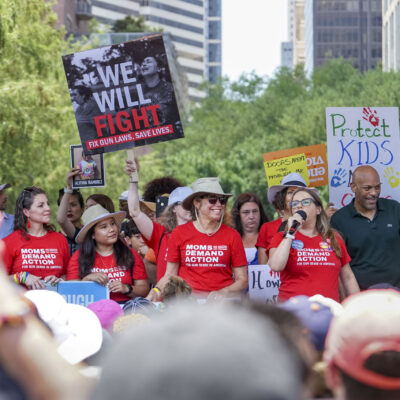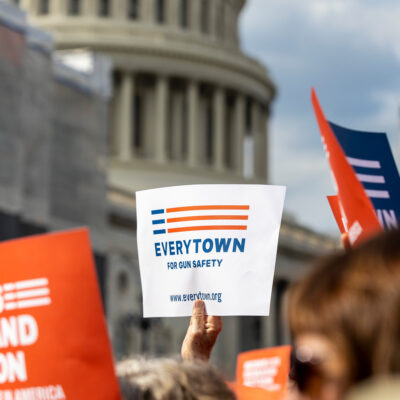Mass Shootings in Highland Park, Buffalo Highlight Need for Red Flag Law Implementation, Enforcement
7.6.2022
While details are still emerging in the tragic mass shooting in Highland Park, Illinois, which killed seven people and wounded at least 30 more, one question stands out: could the shooter have been stopped from obtaining a firearm in the first place?
The shooter in Highland Park appears to have displayed dangerous warning signs, resulting in a police visit to the home and the confiscation of deadly weapons, but a red flag order was never sought. Similarly, the shooter in the atrocity in Buffalo also displayed dangerous warning signs to school administrators and police, but a red flag order was never pursued. These shootings serve as painful reminders of how critical it is to ensure red flag laws are properly implemented and enforced.
Nineteen states and the District of Columbia now have extreme risk protection order laws, known as Red Flag laws, on the books. These laws empower loved ones or law enforcement to seek intervention via a civil order to temporarily prevent someone from accessing firearms if they are displaying warning signs that they may be a danger to themself or others. Red Flag laws can help de-escalate emergency situations and are a proven way to prevent gun violence from taking more lives. The majority of mass shooters display dangerous warning signs before the shooting occurs, highlighting the need for these laws. But these tools are only helpful if actually used.
“In the wake of the mass shootings in Buffalo and now Highland Park, how many more wakeup calls do we need to ensure state red flag laws are fully implemented?” said John Feinblatt, president of Everytown for Gun Safety. “We need to take the tools out of the toolbox when lives are on the line, and the implementation funding in the Bipartisan Safer Communities Act will be crucial to doing so.”
Illinois and New York are among the nineteen states that currently have Red Flag laws. Under Illinois’ current red flag law, both law enforcement and family members are able to file an extreme risk protection order petition when a person is in crisis and are considering harming themselves or others. Petitions can be filed against any Illinois resident, regardless of age.
Last week, President Joe Biden signed the Bipartisan Safer Communities Act into law — a landmark piece of legislation that includes $750 million in much-needed funding over the next five years to support crisis intervention services, including the implementation of state Red Flag laws. The Department of Justice needs to immediately issue solicitations for this funding and provide technical assistance to the states and localities implementing red flag laws. More information about red flag laws is available here.
If you have any questions, please don’t hesitate to reach out.





